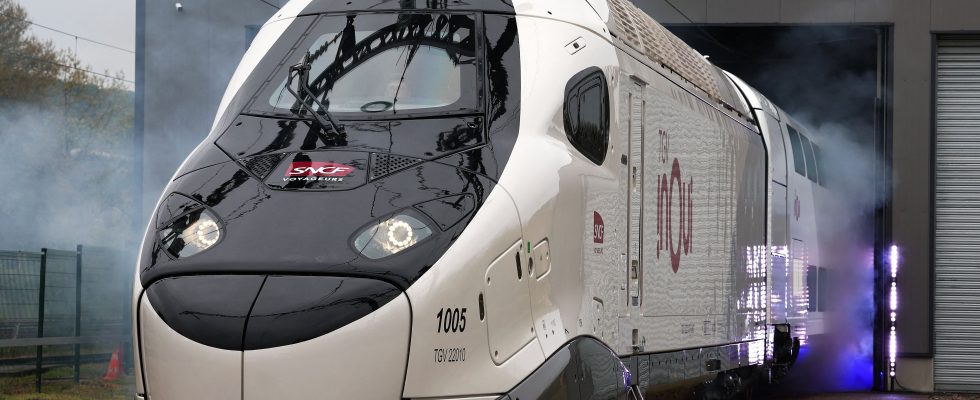A train with a sober aesthetic, dressed all in white, as opposed to the flashy orange of the first models: SNCF Voyageurs presented this Monday, April 29, the livery which will dress the future trains of the TGV M, this “train of the future ” expected for the second half of 2025.
It was orange in the 1980s, then silver gray before becoming gray and blue on the Atlantic axis or even white, gray and red for the current TGV Inoui… It will now be almost all white, with touches of red for the logo and the doors, in order to recall the aesthetics of the Inoui.
“It really has a face, this train”, exclaimed the CEO of SNCF Voyageurs while unveiling this new aesthetic on Monday in Belfort, where Alstom is manufacturing the engines of this new machine impatiently awaited by the SNCF to respond to the increase of travel demand.
“This TGV M is our strategic asset” while the trains are filling up more and more quickly due to lack of supply, insisted Christophe Fanichet. They must also allow the SNCF to “face competition on our rails in France”, he added. The public railway group spent 3.5 billion euros to buy 115 trainsets of this train offering more seats and less energy consumption than the current TGVs, and which will be delivered little by little in 2025 and 2026, then at the rate of 12 per year from 2027.
Delay
In the Alstom workshops in Belfort, some 800 employees manufacture power cars at the rate of one every four months. The construction of the 115 power cars should take around ten years according to Alstom, which is already a year late since the first trainsets were expected for the Olympic Games. The first will be launched on the south-east axis, where competition has already established itself with Trenitalia but also the imminent arrival of the Spaniards Renfe.
The choice of light color responds to the imperatives of climate change, underlined Christophe Fanichet since it “allows the air conditioning to be reduced in the event of high heat”. “Orange was the symbol of technological prowess and performance. White is the harmonization between the train and the landscape,” outlined the boss of the railway company. “There is a desire to stand in time, to draw a clear line in the landscape,” explained TGV design director, Isabelle Le Saux.
Price drop
A little too banal and cold, this new look? “On a small regional train it might have been more colorful but it’s not the same spirit,” explains the chief designer. She promises, the interior will be more colorful than in current trains. It will not be revealed until the end of the year.
This is the fifth series of TGV ordered by the SNCF since the beginning of the 1980s, but “for me, it is the most innovative train since the first series” put into service in 1981, underlined the boss of the TGV, Alain Krakovich. “What will change is the space. We will have 20% more seats with the same length, but also more space per customer,” he added, emphasizing the adaptable aspect of the train. “We will have a bar or we will not have a bar, we will have spaces for bicycles like we have never had, 16 seats on a double train. We will be able to modulate the train according to the markets, according to the customers “, enthused Alain Krakovitch.
The TGV M will be able to accommodate up to 720 passengers – compared to 560 currently – and “when we have the 115 trains, it will allow more trains to run, with more passengers and therefore with lower prices”, he wants to believe .
